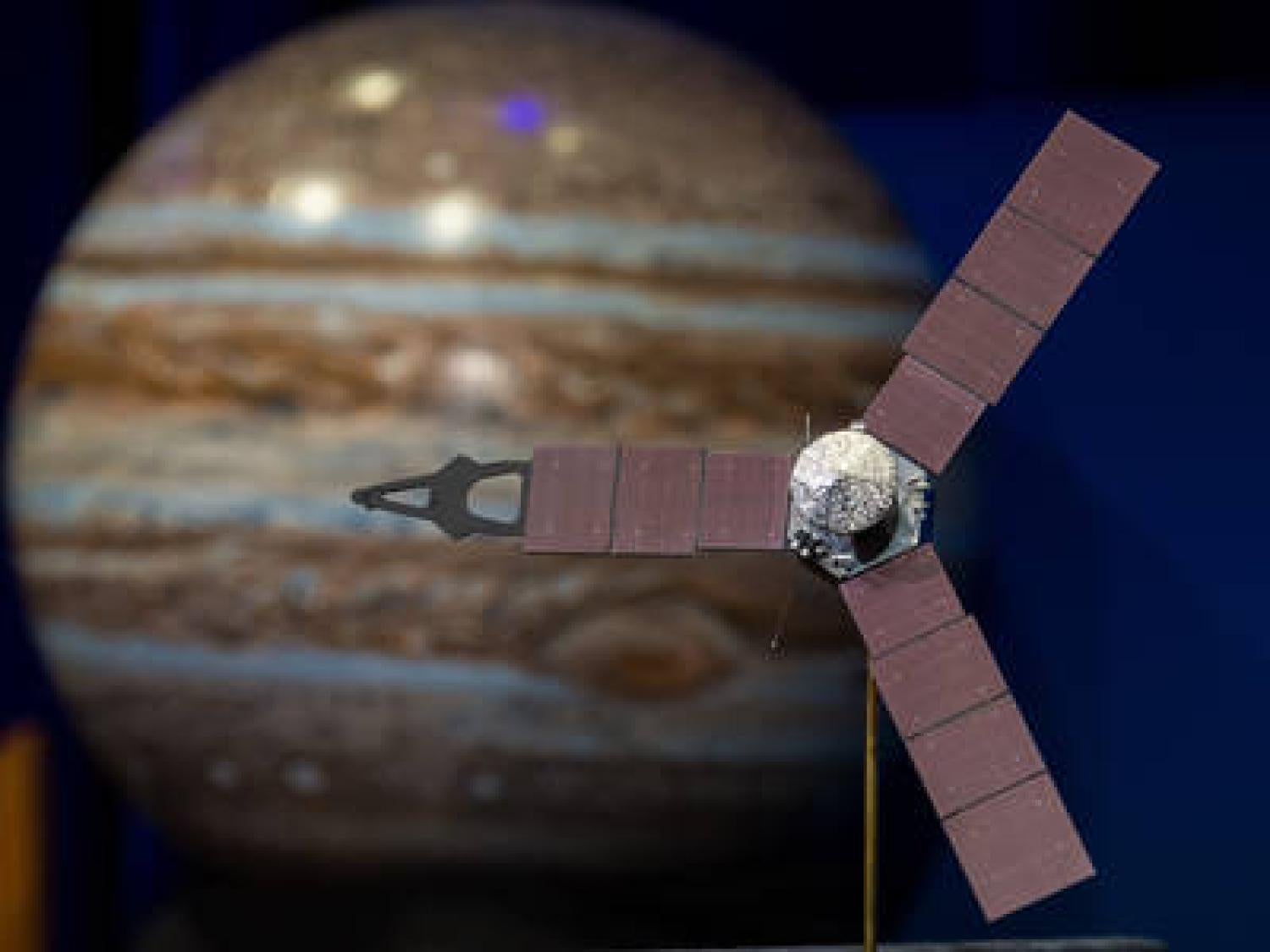CU Boulder faculty, students primed for Juno mission to Jupiter
Even though CU Boulder Professor Fran Bagenal has been a part of five NASA planetary missions, including the Galileo mission to Jupiter in 1995, this latest mission to Jupiter called “Juno” that she’s involved in has her nervous. That’s because this time the spacecraft, which enters orbit July 4, will be flying dangerously close to the big planet’s magnetic field.
“I am very nervous. This is a new place. We’ve never flown a spacecraft through this potentially hazardous environment. Every finger and every toe is crossed and I am really hoping that all is going to go really well. We built the spacecraft with protection to hopefully survive some of these hazards but it’s a new world. We don’t know what it’s like around Jupiter. It’s terra incognito.”
Bagenal is one of three researchers from CU-Boulder’s Laboratory for Atmospheric and Space Physics and five students, both undergraduates and graduate students, that are part of the Juno mission. Launched in 2011, the spacecraft is slated to orbit Jupiter’s poles 37 times roughly 3,000 miles above its clouds tops to better understand the origin and evolution of the largest planet in the solar system.
“Close to Jupiter there is a donut of energetic particles trapped in the magnetic field of Jupiter and we know this and we’ve known for decades because these charged particles emit radio waves that we can observe here on Earth. And we know that there are a lot of them and we know that the fluxes are high. So we avoid them because our sensitive electronics and detectors we want to keep out of that nasty environment. On the other hand, we want to get up close if we’re going to measure what’s inside Jupiter.”
Scientists hope to determine if Jupiter has solid core, measure the planet’s magnetic fields, hunt for water vapor and observe the polar auroras. CUT 3 “The whole point of Juno is to fly over the poles so that we can map out the gravity field, the magnetic field. You’ve got to get up close to measure the details of those fields. (:11) By flying over it and measuring the amount of water in the atmosphere and measuring the gravity and the magnetic field inside we’ll be able to work out what the structure is inside of Jupiter and that will test our theories about how solar systems are formed and how giant planets formed in particular.”
In addition to Bagenal, LASP Professor Robert Ergun and Research Associate Robert Wilson are part of the Juno science team. Ergun, an expert on Earth’s magnetosphere and associated polar auroras, will be comparing the physical processes at Jupiter with those on Earth. Wilson is a member of the instrument team that will be using Juno to detect and analyze the electrons and charged particles that produce Jupiter’s bright auroras. The Juno spacecraft is carrying 11 experiments and includes a camera to provide images of the colorful Jovian cloud tops.
-CU-



